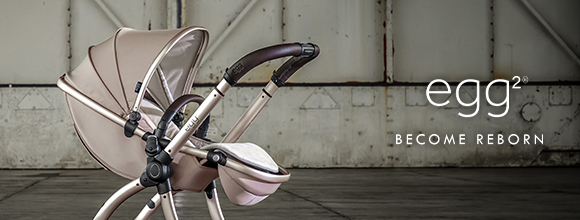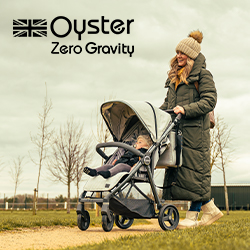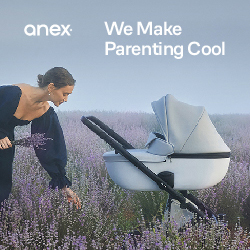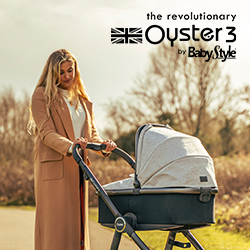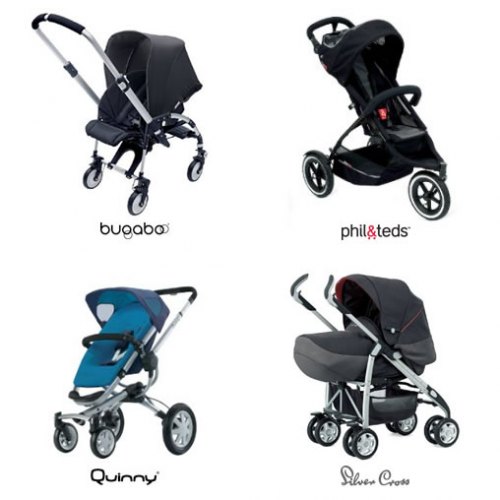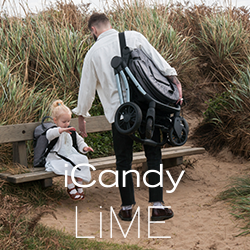Child Car Seats – Real Life v’s Theory.
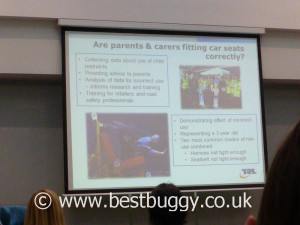
Being a parent is the hardest job in the world. Babies don’t come with an instruction book and modern parents are reaching for the Internet for information. However the information online is not always accurate or unbiased, and sometimes you don’t know who to trust, especially when it comes to car seat safety.
Over the last 8 years in particular, we have seen Extended Rear Facing (ERF) go from being regarded as an odd thing to do, to being the norm. As parents to young children, we sat and read about ERF and the scary information that you are warned will happen to your child if you do not rear face them long term. However, our car did not fit an ERF seat, and we were left concerned that our toddler may not be safe in his forward facing car seat. We were in the fortunate position where we were able to have conversations with a number of leading car seat experts, to discuss openly which car seats are actually safest for a child….and more importantly, what would be safest for our own children. We thought we would share our findings here, in an effort to balance out what appears to be extremely scary ‘facts’ and physics, with the real life truths from the experiences of people who really see the results of traffic accidents; and to put car safety into context in a rational way. We have gathered information from police officers, fire officers, car seat trainers and experts, Which? car seat advisors, from car seat manufacturers, from the Transport Research Laboratory (TRL) who crash test car seats, and from medical professionals. It has taken us several years of speaking these individuals and many, many hours of reading documents and researching before we wrote this piece.
Three years ago, during a meeting with some top UK car seat experts we mentioned that ERF was the safest way to transport a child. The experts looked at each other and it was clear they didn’t agree with this statement. They told us that ERF was not necessarily safest. So we started to ask more questions. The experts told us that in their opinion, other factors were more important in whether a child came out of a crash alive. These included correct installation of the car seat, correct fitting of the child in the car seat, and the space in the car. We came to realise that they were not alone with this viewpoint.
In autumn 2015, we attended an event at the Transport Research Laboratory (TRL) which is one of two European crash test labs. We asked the expert at TRL about whether they considered ERF seats as being the safest to transport children. Considering they were speaking at an event run by a leading ERF seat manufacturer, we expected them to say that ERF was the safest type of child car seat, but rather surprisingly they didn’t. In fact they said ‘5 times safer?? Than what??’ There is nothing that qualifies this claim, and another car seat brand have been prevented from using a similar statement since. During their presentation the TRL expert emphasised the importance of fitting a car seat correctly, and then also the importance of fitting the child correctly. They showed us images of what happened if a car seat was incorrectly fitted, and the child was also incorrectly fitted (see above). In the event of an accident, if the child seat was incorrectly installed, then it would slide forwards and potentially hit the front seat. If the child was incorrectly harnessed in as well, then the child stood no chance, because both the seat and the child would be propelled forwards too into the seat in front, or if the harness was too loose then the child could even be ejected.
In 2015, there were a number of reports on car seat fitting, which showed that up to 90% of car seats in the UK are not properly fitted. Think about it! That’s a horrendous and unnecessary statistic which is putting up to 90% of our children’s lives at risk, every single day! Even more scary is that according to one study, a quarter of UK motorists have admitted driving with children without using a child seat.
In 2016 a report was published which stated that there had been no child deaths in traffic accidents in Finland in 2015. When we posted about these fantastic statistics, someone made a comment that it was because all children in Finland ERF. However the reasons why child deaths have been eliminated in traffic accidents were easy to discover by reading the full report. Finland had two main reasons for the deaths of children in traffic accidents. First of all was the incorrect fitting of children in child car seats; and secondly they identified that unsecured loads in the boot were flying forwards and hitting the children in the event of an impact. These children may have been in either forward facing or ERF seats, but either way, the Finnish government worked hard on these two issues and the result was no child deaths in accidents, simply by teaching parents to fit child seats correctly and to secure loads in their car boot – not by encouraging parents to ERF their children!
No car seat, whether ERF or FF, will protect a child if used incorrectly. It is quite possible that every death of a child in a car crash in the UK could have been prevented, as Finland have proved, by simply having the child in the correct car seat and fitting the seat correctly – irrespective of whether the seat was forward or rear facing. If ALL parents, took time, care and attention to fit and keep checking that their child’s seat is correctly installed, and adjusted to fit their child, and that their child was tightly harnessed in, then this alone would save lives and prevent injuries.
We have seen criticism of a leading UK testing house because they place an emphasis on ‘ease of fit’, but last year we fitted a new seat in our car, and we began to realise the value of having a car seat that is simple to fit. Our new seat took hours of reading instructions and fitting in the car before we felt ok with the fit. However, even after all our care and attention, we still managed to fit the seat incorrectly and the seat was eventually being branded a “Do not buy” by Which? with fitting errors being cited as a reason why. We now totally appreciate that ‘ease of fit’ makes for a more foolproof, mistake free, safe installation, which leads to a child being safer in the event of an accident.
So which type of car seat is the safest – a forward facing seat or an extended rear facing seat?
When you ask an independent car seat expert which car seat is the safest, they will probably ask you ‘from which angle are you planning to be hit from?’ This may seem like a strange answer until you understand that the direction of impact will give a different answer. A rear facing seat is known to be safest for children and for adults in a head on collision. However, in a side impact, you would want good side impact protection. In the event of a rear shunt, a forward facing car seat would be better. Unfortunately you can not predict from which angle your car will be hit from. There is no crystal ball. Every parent has to make their own decision about what they believe is best for their child and the journeys that they do. After seeing the bigger picture, along with ALL the child car seat experts that we have met, we do not believe that ERF is necessarily the safest way for an older toddler to travel; and in fact rear facing an older toddler could potentially be more dangerous than forward facing them.
During our research we heard how a chief fire officer say that the accidents they most dreaded attending were the side impact ones. Especially when children were involved. This makes sense really when you consider that the front of the car has the added protection of the cars bonnet and a heavy engine in a head on collision. In a rear collision you have the boot. However, in the event of a side impact, anyone is much more vulnerable behind just a few inches of metal!
When a child is in a forward facing child seat, their seat is attached to the back seat which is the strongest part of the car. However a rear facing child is situated forwards away from the strengthening rear seat. Their head is right in the centre of the car, at the weakest point by the central pillar, right in front of the glass window. ERF seats often have support legs which are known to twist in the event of a rear impact. One argument against this is that rear facing shunts do not take place at high speed. However there have been two newsworthy large crashes in recent times – one of which was a large pile up on the motorway where cars where hit at high speed from behind. We personally know of two incidents where cars were sat at traffic lights and got hit at very high speed from behind (one was at 70mph). The children in these last two incidents both survived. They were in forward facing seats. Unfortunately children in ERF seats do still die in road accidents as a few sad high profile cases in the press in 2015 proved. Thus there must be more to crash survival than simply the direction of travel the child is facing.
Our roads in the UK are nothing like European roads. Our roads are more congested; more rural; have more bends; and have more junctions; and higher rural speed limits; but yet in 2012, the UK had the lowest traffic fatality rate out of 34 European countries. This statistic in car passenger safety continues into 2015 and 2016. In 2012 England was also scored as having better specifically child car passenger safety, than countries like Sweden, who are pouring millions of pounds into improving their road systems in an effort to reduce road casualties. Most of the toddlers and children in the UK used in these statistics will have been in a forward facing seat. Whilst a large percentage of accidents in the UK are head on collisions, an even larger percentage involve a side or rear impact. Most parents drive regular routes, and looking at the type of journeys you do; the speed you travel; the type of roads you are on; whether there are a lot of junctions or any accident black spots; etc. would be sensible before buying a car seat.
One of the biggest factors picked up on by the European car safety experts is the importance of between the space around the passenger in the car and injuries i.e. that child are more likely to survive if they were travelling in a larger car. However, not everyone can afford a large car. Therefore part of the new i-Size regulations aim to replicate the advantages of travelling in a bigger car, by defining the amount of space in the car for the child and their car seat. So in future, you will buy an i-Size car which has extra inbuilt side impact protection. The the ISOFIX fittings will be nearer the centre of the car, away from the doors, to give children maximum space in the event of a side impact. Our car for example can only fit two child seats on the rear seat. The correct i-Size car seat will fit into a certain space, called an envelope, in an i-Sized car! The car will be certified to take a certain ‘envelope’ of child car seat, so a small car for example may only take envelope size 1, whilst a large car may take envelope sizes 1, 2 and 3. The manufacturers of the cars have to ensure that the space around the child is well protected, and they will get rated in their safety tests in how safe this is for the child. We believe this is the first time that car manufacturers have had to seriously consider how safe children will be in their vehicles in order to achieve the highest safety ratings.
But what of the supposed ‘fact’ that a forward facing impact will place such high loads on a young child’s neck so as to cause internal decapitation?
The physical and theoretical evidence for this is compelling. So compelling that we sat on the fence for a long time wondering whether to ERF our son. The potential injuries are horrific and any parent quite rightly would want to protect their child from this. But…look around you? How often do you see or hear of a story where a child dies of internal decapitation? If this was happening in every car crash where a young child was forward facing, then a) it would be in the news every day, and everyone would know about it; b) the ERF campaigners would be extremely vocal; and c) the law would have been changed along with the introduction of i-Size to keep children rear facing until the age of 4, not just to at least 15 months.
Yes, it can happen, and we know of one story in 2015 where a child in Australia suffered an internal decapitation in a road accident in a forward facing seat – but the child actually miraculously survived thanks to modern rescue techniques and medical advances. However, we have equally heard of a child who died in a head on collision whilst using an ERF seat. Having an Extended Rear Facing seat is no guarantee of survival in a car crash.
We sat on the fence for a long time absorbing all this information. Then one day someone approached us because they knew that we were trying to give parents a more balanced view of ERF v’s forward facing seats. They told us that they were a coroner, a person who looks for causes of deaths, and they see the horrific results of car crashes every day. They told us that in their experience internal decapitation in the event of a car crash is exceedingly rare. So rare that neither they OR their colleague have EVER seen one example of an internal decapitation of a child in a car accident in a collective period of over 70 years of work. This statement becomes more incredible and important when you realise that the senior colleague started work BEFORE child car seats were even invented, and at a time when seat belt laws were non existent.
They did continue and say that unfortunately they do commonly see deaths from side impact crashes because IMPORTANTLY the human head is designed to flex forwards and backwards, but it is not designed to flex sideways. They themselves, as a parent, have chosen not put their children in extended rear facing seats, but have chosen to find good quality forward facing car seats. When we spoke to a member of staff from A&E in a different area, they also concurred with what the coroner was telling us. They had only ever once seen the injuries described by ERF campaigners through their department once.
For us this was the evidence we required to finally come down off the fence. We immediately, logged into Which?, checked for the best performing car seats, and bought a forward facing seat with good side impact protection for our toddler.
As parents, you are free to make decisions about your child’s care and safety. However, you are ultimately held responsible and have to act within the law. You have to make the best judgement based on the resources and information you have available.
Accidents do sadly happen. Children do die in car accidents, but not as many as in the past. Put this into perspective that any car accident is relatively rare compared with the number of vehicles on the road and journeys done every day.
Simply putting your child in an ERF seat will not “save” them. You may still be putting them at risk through avoidable factors in the event of an accident e.g. incorrect installation; overweight; loose or not buckled up harnesses; positional asphyxiation from sleeping in a seat that is too upright; etc. or there may be unavoidable factors such as a side impact crash; fire; water; air bag injuries or a rollover.
It is a parent’s right to choose to forward face their child as long as they are over 9kg in an RR44/04 seat or over 15 months in an i-Size seat. Not one of our independent experts said that ERF was necessarily the safest way to carry your child beyond the age of 15 months. Not one….! None were against Extended Rear Facing either, and all agreed that a baby / young toddler should be kept rear facing as long as possible, but for how long really is the question?
How long should a child Extended Rear Face?
Before the implementation of the new i-Size legislation, a detailed study was commissioned which looked at what age children were safest to be turned forward facing in a car. The experts decided that the weight of the child was no longer the correct measure of how well as child would survive an accident, but that bone density is a better measure. Bone density apparently starts to increase from the day of birth. So that unlike weight or height, bones increase in density fairly uniformly across children. The people behind i-Size legislation have looked at these robust anatomical studies and decided that a child should rear face until at least 15 months of age. However a child from 15 months of age deemed as is sufficiently anatomically strong enough to forward face. So why would the i-Size board who are still currently making these decisions about the future of child car seat safety have made the suggestion that children should only rear face for at least the 15 months, if ERF is safer up to the age of 4?! i-Size is so new that this would have been the perfect opportunity to change the law, but the legislators decided a minimum of 15 months rear facing was sufficient.
The Transport Research Laboratory expert showed slides of an above average 4 year old in an ERF seat during a crash test. This showed that the child was sliding up the seat so that the child’s head was extruding from the top of the seat. Thus the most vulnerable part of the child was being exposed, which should not happen. In a side impact, the child probably stood no chance. Afterwards, we asked lots of questions including at what age the expert felt that a child should stop rear facing. The expert suggested that as soon as a child can peer round the sides of an ERF seat, that they should forward face. This seems like sensible advice from someone who really knows. Certainly the crash test slides seemed to indicate that a typical 50th centile child should not ERF beyond the age of 4.
It is SO important that parents put risks and information into perspective. There is actually no right answer to ‘Which car seat is safest for my child?’ Cars are dangerous and carry risks with use. There is no way we can predict how any car journey will end up. However, there is lots that parents can do to keep a child as safe as possible in the car seat that you already own (see below). If you need a new car seat then we would advise doing some research. Look through the ADAC crash test results who are regarded as the gold standard for car seat testing, or pay £1 to Which? (who use the crash test results from ADAC). As the TRL spokesperson told us, whilst you should try to buy from a reputable brand, there are also low cost brands which have done surprisingly well in crash testing, and this can be seen in the ADAC results. There are no excuses for not doing your research.
Importantly ensure that the seat that you wish to buy is compatible with your vehicle, and that you have checked in the car manufacturer’s handbook where they advise that child seats should be placed.
Our suggestions when choosing and using a car seat:
1. Weigh and measure your child and check that the car seat you have is suitable for your child. Whether your seat is an R44/04 seat or an i-Size seat, there are weight limits on use. i-Size seats also have a limit on height. It may be the shoulder or hip measurement which dictates the safety parameters of the seat, even if the child appears to have room to grow.
2. Check that the car seat fits properly in the car. We have had a few car seats which haven’t fitted in our cars in the past when we have tried them. A good independent retailer that specialises in fitting car seats (look for an IOSH Accreditated Advisor) would be invaluable for ensuring a proper fit, however, do get involved and check for yourself online or by mailing the manufacturer.
3. Familiarise yourself with your car seat. Read the instructions – don’t simply assume you know how the seat fits. Then fit the seat correctly in the car.
3. Seating your child under the age of 12 in the rear of the car will cut the risk a road accident by 36% (car-safety.org 2011).
4. Ensure your child is sat correctly in the seat – usually this is with their bottom as far back in the seat as possible and an upright straight position.
5. Fit or route the harness or seat belt correctly around the child and ensure that the fit is snug. There should be no bulky clothing on your child e.g. thick jumper or coat in any car seat.
6. Teach your child how to sit sensibly and correctly in their seat.
7. Ensure that anyone carrying your child in a car has a suitable car seat, and that if the seats are transferred from car to car, that they are correctly fitted each time.
8. Repeat the above steps regularly. Children grow. Car seats move. Seat belts slacken off across time. Car seats need checking for fit and damage.
Please make sure you use your child car seat every journey, and that you fit your child into the seat correctly, every time………and drive carefully!
Addendum
Since we wrote this piece, Dorel (Maxi Cosi) have released a position statement in August 2017 which removes their guidance that children should rear face until 2 years of age. They looked again at studies which originally informed that ERF was safer for children:
According to Dorel’s statement:
“…both the Henary study and the Padmanaban study demonstrate that car seats are very effective at preventing injury for children. In fact, the differences in safety for rear-facing or forward-facing children between 12 and 24 months are slight. For example, in the Padmanaban study 0.4% suffered serious injury rear-facing and 0.2% suffered serious injury forward-facing. Using the same group of children in the same study, that means fewer than 1% of children were seriously injured when restrained either forward-facing or rear-facing. This perspective is very important to understand when discussing the subject of direction with parents of a child between 12 and 24 months. As often indicated by car seat technicians, the most important factors of car seat safety is the right car seat is selected for the child, positioned and installed correctly in the vehicle, and that the child is harnessed right every time.”
Read the full Dorel statement here.
The Car Seat Blog has some good open minded advice here and is well worth a read. We agree that advice and guidance should be revised with new information. As we stated above, the i-Size board had the opportunity to change the laws so that all children ERF-ed even longer…but they chose not to…and there will be reasons for this.
- Kiddy Cruiserfix 3 Review by Best Buggy
- Recaro Zero. 1 Elite Car Seat
- Jané Matrix Light Review
- Child Car Seats - Real Life v's Theory.
- Cozy 'n' Safe Excalibur v's Apramo One v's Diono Radian 5
- Maxi-Cosi Rodifix Air Review by Best Buggy
- Mifold - the Grab-and-Go Booster Cushion
- Finding the Right Car Seat for a Child with Additional Needs
- Juniair Go Booster Inflatable Child Car Seat
- BeSafe iZi Modular & Visit to TRL Child Safety Centre
- Mifold Booster Cushion Car Seat
- CasualPlay Q-Retraktor Review by Best Buggy
- Cosatto Zoomi Review by Best Buggy
- Cosatto Hootle Review by Best Buggy
- Cosatto Hug Review by Best Buggy
- Kiddy Evo-lunafix Review by Best Buggy
- The Introduction of the 2015 i-Size Car Seat Regulation
- Maxi Cosi Axiss Fit Review - Submitted to Best Buggy
- Best Buggy's Car Seat Safety Tips and Advice
- Why Babies Should Travel Laid Flat In A Car Seat Infant Carrier.
- Simple Parenting Doona Car Seat Stroller Review by Best Buggy
